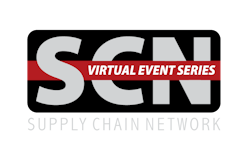
The world around us has changed in dramatic fashion in a compressed amount of time. Thus, supply chain executives seeking to lead, not follow, in our new environment need to adjust their sourcing strategy to win the future.
Our multipronged headwinds of U.S.-China tariffs, COVID-19 pandemic and 2020 recession has caused immense stresses on our supply bases. The net result is that our teams will not only have to source new supply needs, but potentially also resource and outsource distressed current suppliers and internal production. Thus, all the existing new supplier identification, qualification and sourcing work will need to be done in a compressed timeframe, proving a tough bandwidth challenge. Further, as resourcing and outsourcing are executed less often, internal teams might not have acquired these niche skill sets.
Complex engineered products, e.g. assemblies with 50-plus parts across many commodities such as automotive assemblies, present specific sourcing technical requirements that historically have not easily lent themselves to newer automation and artificial intelligence (AI) tools. However, newer agile supply chain collaboration productivity software and on demand support models are proving powerful tailored tools to compress sourcing timelines. Forward thinking leaders are building a winning sourcing game plan for success composed of agile strategies, tactics, and tools so they can thrive in a more dynamic world.
Adjusting sourcing strategy— the “game plan”
As with any great sports team, your team needs to know your game plan so you can win. Diligently mapping your refined strategy, measurements for success and ideal outcomes upfront is key to accelerating your efforts.
Manufacturers heavily reliant on high-risk low-cost country global sourcing will need to identify alternative domestic suppliers to combat volatile tariffs and fluctuating lead times. High industry spend concentrations in financially distressed suppliers will lead to bankruptcies forcing manufacturers to resource. As we plan to eliminate future disruptions, supply chain leaders will need to seek out alternative suppliers to simply mitigate risk, e.g., different regions, shorter distances, and dual sources.
Below are the most common sourcing strategies supply chain leaders are deploying today.
1. Localizing. Moving supply to suppliers closer to final product manufacturing
2. Onshoring. Transitioning supply from international suppliers to domestic suppliers
3. Offshoring. Transitioning supply from domestic suppliers to international suppliers
4. Diversifying. Spreading supply across regions, countries and/or suppliers
5. Consolidating. Shrinking supply across regions, countries and/or suppliers
6. Expanding. Adding supply across regions, countries and/or suppliers
Outline sourcing tactics— “training plan to game day”
Great teams win more games due to the time they invest in training that culminates in better game day results. Sourcing is no different, the tactics, your expertise, experience and pace of deployment will determine success realizing your strategy. Determining upfront the required tactics you will need to deploy will allow you and your team to realize success sooner. One of the three below tactics will need to be pared with your strategy to ensure success.
1. Sourcing. Awarding new supply to existing and/or new suppliers
2. Resourcing. Moving current supply from existing suppliers to another current and/or new suppliers
3. Outsourcing. Moving current production from your plant to current and/or new suppliers
Acquire agile productivity tools— “plays to win the game”
In today’s environment, new agile plays win. As our bandwidth is stretched, budgets are limited and risk issues abound, companies need tools that empower teams to do more with less.
Utilizing agile supply chain productivity tools can not only enhance sourcing efforts, but it also often leads to superior commercial results. Aligning the right tools with your strategy and tactics is the key to successful strategic sourcing. The below five tools will further accelerate and optimize your sourcing.
1. Compress with automated supplier search software.
Automated supplier search software can provide standardized information and inputs to identify ideal suppliers faster and more strategically. These productivity software tools allow supply chain professionals to gain access to powerful advanced search tools and vetted existing supplier data. Technology capabilities can include automated-plan-for-every-part features to organize assembly bill of materials that enable teams to do work at the same time and further compress timelines.
2. Tailor with customizable supplier databases
Newer software technologies that allow users to add data e.g. supplier manufacturing capacity to current databases real time solves the problem of having to document your new supplier search data offline. The challenge with custom-engineered parts is there are many required sourcing considerations e.g. existing tooling vs. common off-the-shelf parts. Customizable databases allow experienced professionals to overlay specific industry and supplier preferences to better qualify suppliers.
3. Quicken with concurrent collaboration on tasks
Real time collaboration is needed on critical supply needs e.g. identifying alternative suppliers to address a specific wiring harness supply issue. New agile task management software productivity tools are empowering teams to better organize and execute tasks. In addition, software that allow teams to build collaborative supplier lists, track multiple capabilities, and document qualification notes enables teams to accelerate the supplier search to sourcing award process.
4. Align with tracked supplier engagement data
Complex assemblies, like a door module assembly for an automotive vehicle, may have as many as 60 parts requiring multiple supplier exchanges ahead of quoting. Traditionally, supply chain professionals track pre-quoting supplier interactions in their head. We need a digital home for supplier engagement data to free up our headspace to think strategically. Collaborative productivity software that empowers teams to track and share real time supplier notes, engagement statues, and open tasks can prove a valuable sourcing time saving tool.
5. Enhance with on-demand managed services
If you find yourself with more to do and a limited budget, on demand managed services could allow you to accomplish more. Newer technology enabled managed services firms, a combination of software technology and people expertise competencies, are executing sourcing, resourcing and outsourcing for manufacturers. One application is utilizing a managed services partner to support ongoing supply chain risk management efforts which could include proactive supplier intelligence monitoring and acting to resource suppliers if needed. Another use case is outsourcing existing production to a managed services firm to manage, source and supply on the manufacturer’s behalf.
The agile sourcing game plan
The future was always coming, in many ways recent events simply brought new realities to our doorstep sooner. Geopolitical trade disconnects, teams working virtually, and global economic downturn are upon us, it is up to us to adjust our supply chains to succeed in the days ahead.
We are in the first quarter of a long game as global markets remain volatile and key input variables remain unknown. To win the future, we must embrace new technologies and ways of working to foster greater supply chain agility. We cannot predict every supply need or supplier issue. However, we can control the flexibility of our teams and extended enterprise so we can proactively address the known and unknown.










